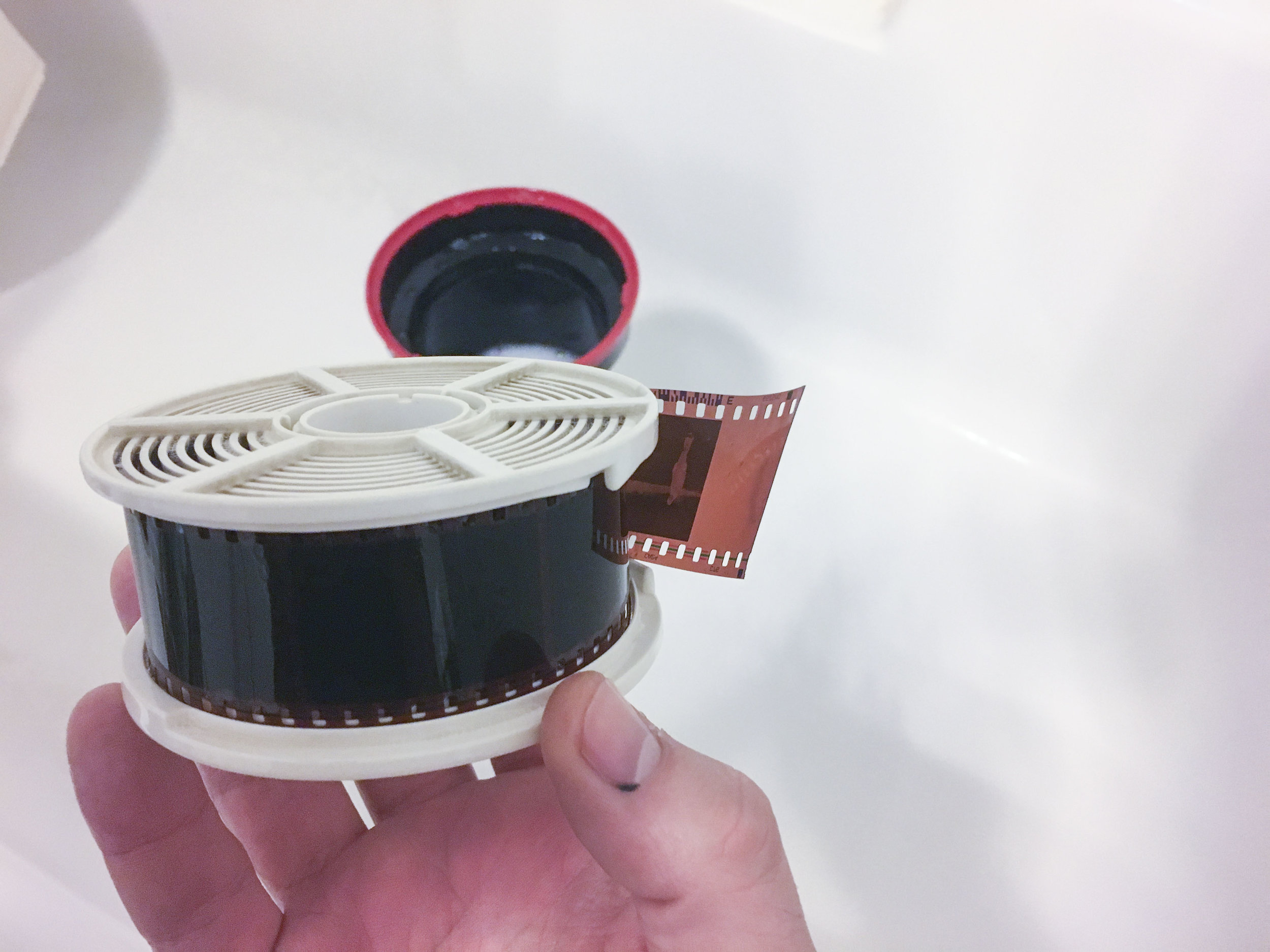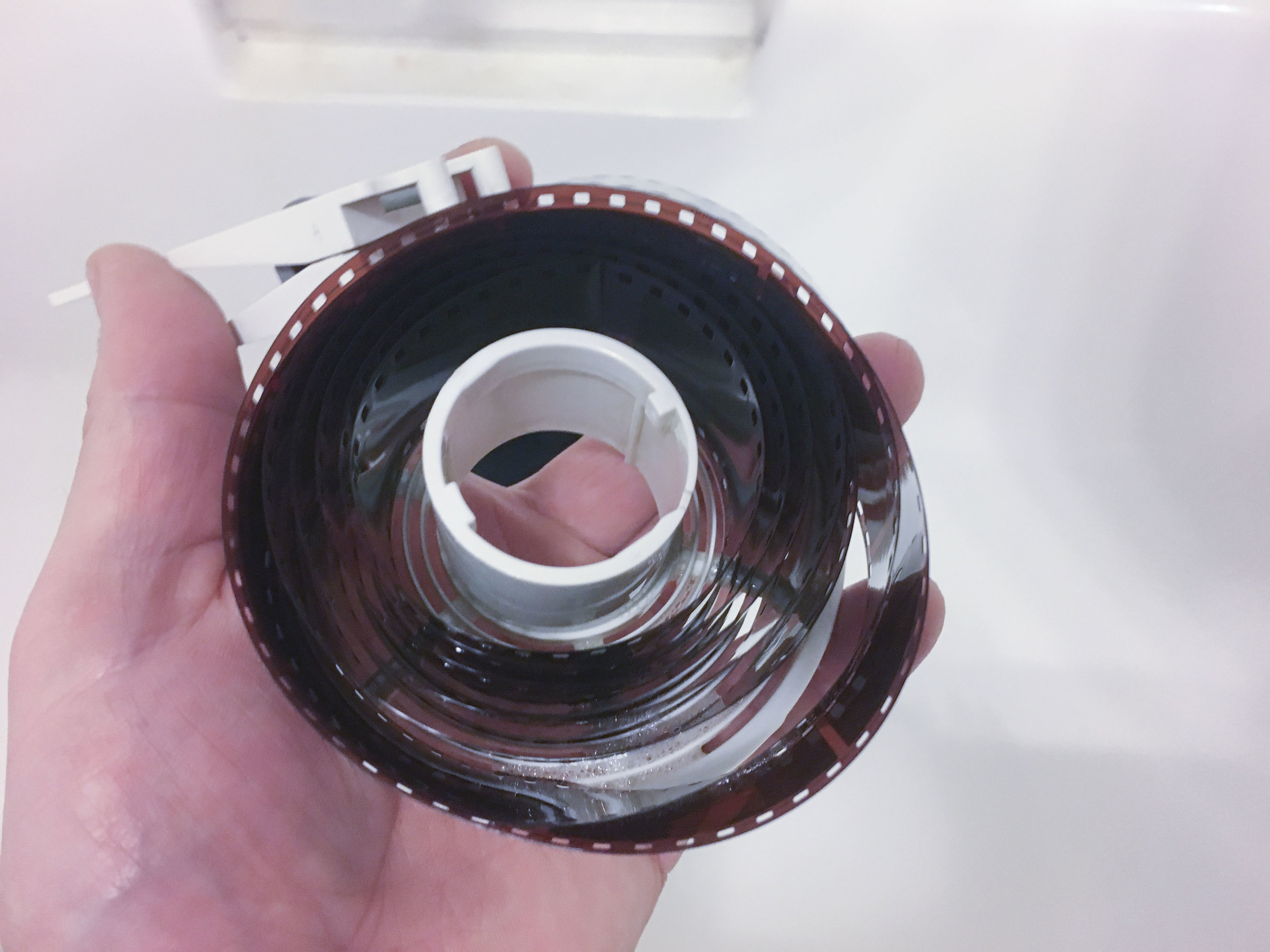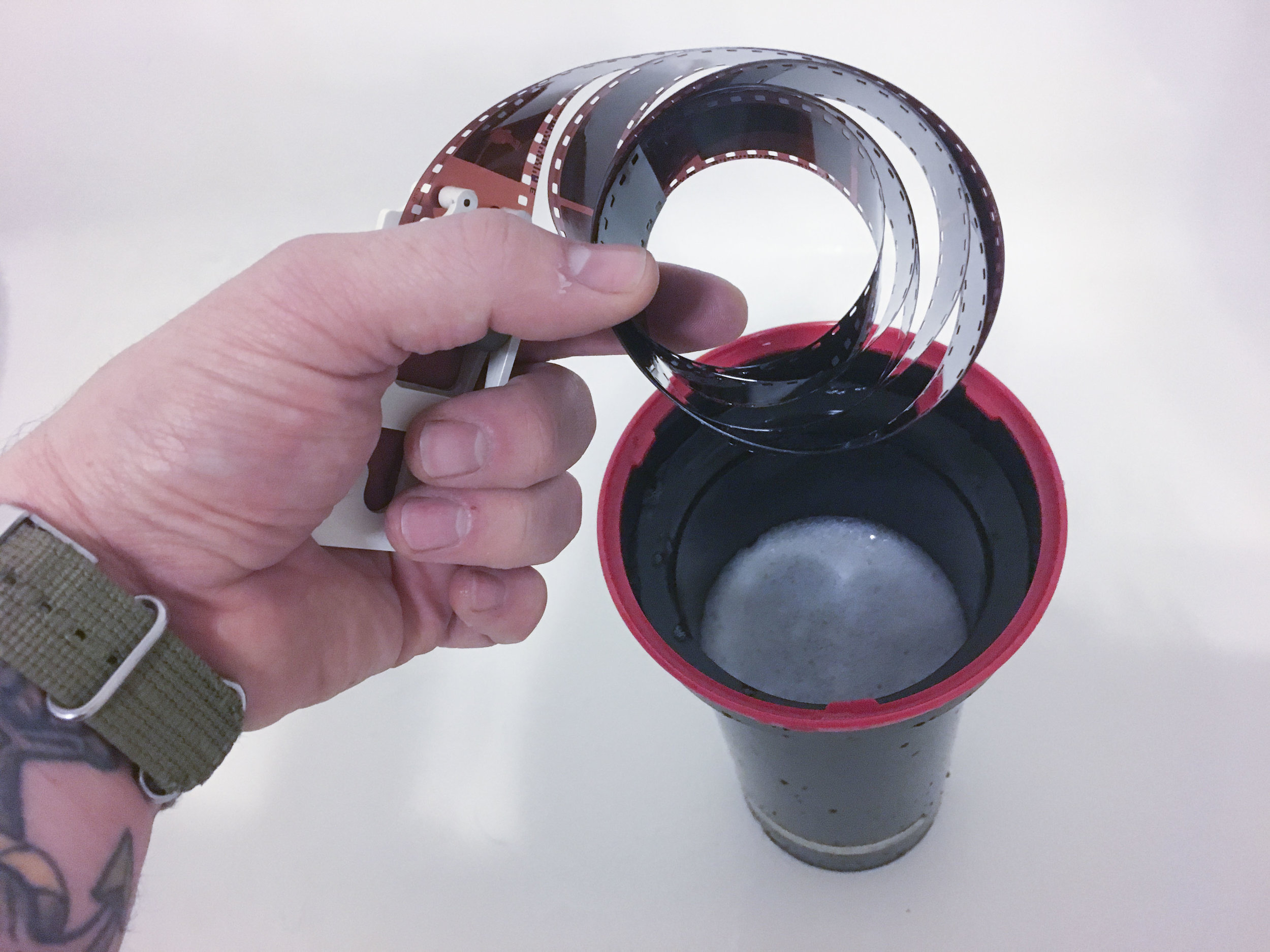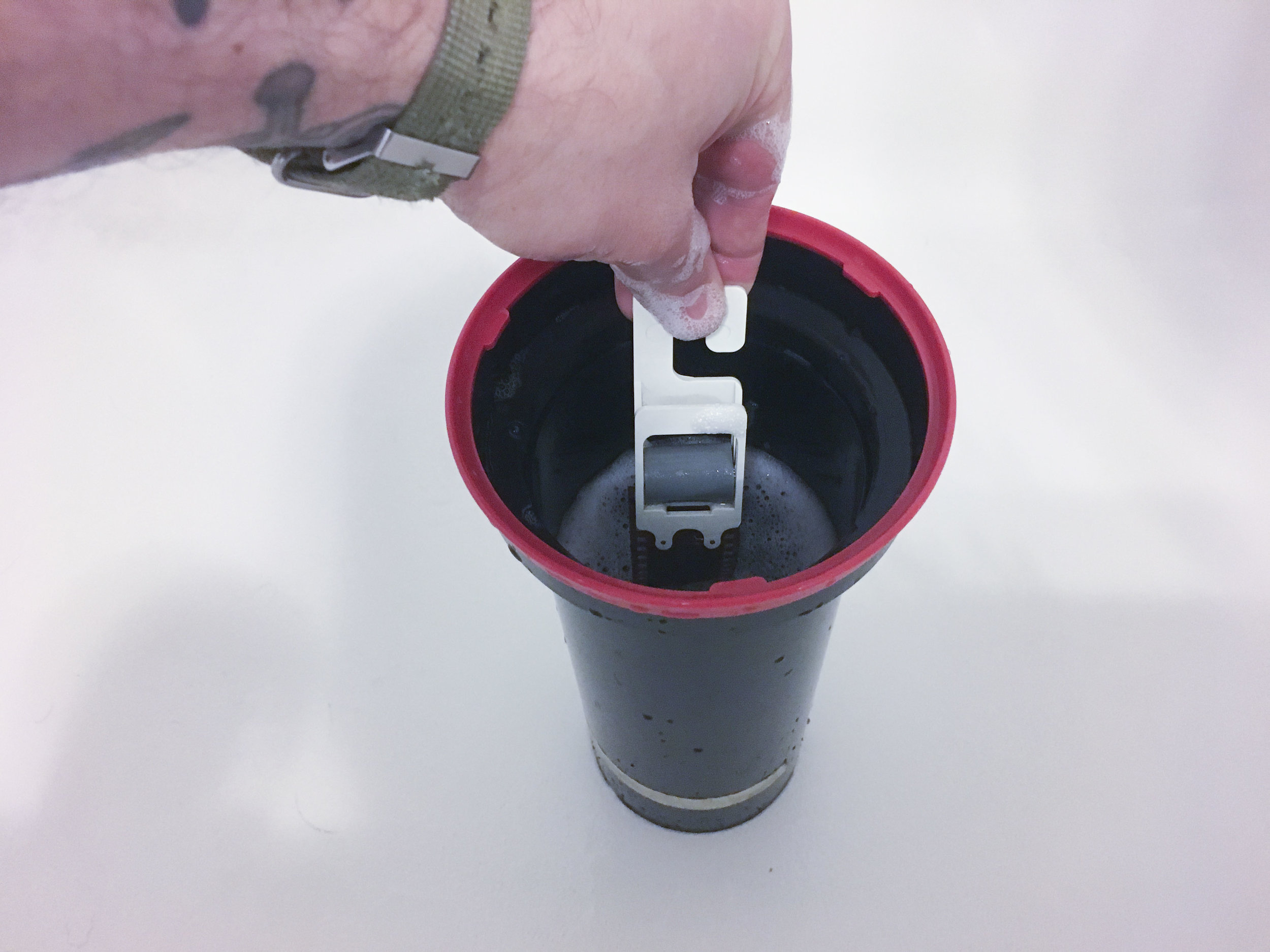Processing Color Negative Film at Home
I started out as a digital photographer. It wasn’t until 2015 until I actually started shooting film. I was hooked immediately and quickly learned how costly it can be doing something you’re passionate about. As with any passion, I learned different ways to make my craft more affordable and manageable for my life; developing color negative films (along with B&W and E6) in my kitchen has been a catalyst for my analog photography.
I’ve been doing my own color film processing for almost a year now. I had some reservations about the process, in other words, I was a bit intimidated to do my own color film. I had only processed a handful of traditional black and white rolls before and I wasn’t completely sure what to expect. Compared to black and white, the main difference here is the high temperatures but that is easily regulated by a warm water bath in a tub or sink.
I want to show everyone that it’s not difficult and that anyone can do it. If you’re like me and love shooting a high volume of film, color processing yourself is a great way keep it affordable.
Let’s get started, shall we?
Inventory
First, let’s look at some of the things we’ll need.
- Chemicals (I use the 2L C41 kit from Argentix)
- Developer
- Blix
- Stabilizer
- Thermometer(s)
- Photo Flo
- Empty Milk Jug (4L)
- Clips
- Tank
- Reels
- Exposed film
- Timer
- Funnels
I also like to have a few towels on hand to keep things tidy.
Setup
For me, organization is key. I like to lay everything out to make sure I follow the right steps and keep it on-time and on-temp.
Before we begin, we need to get everything all set up. The first thing I do is run the hot water. Once it’s hot as hell, I plug the sink and get my bottles in there to warm up. Fill up your water bath until the bottles are covered while lying flat - they'll warm up quicker that way. I prefer glass amber bottles to clear plastic. I like a narrow bottle (for space) with a firm base (for stability). The wide pour-spout is also a bonus (for speed). Anyway, throw them in the sink and let them do their thing while we go ahead and load up the reels.
At this time, I also fill up an empty milk jug with water to use for wash. Make sure to keep and maintain the temperature for this, as well; I tend to go a little higher than the standard 102 and go 105 F since it’ll be a few minutes once we come back after loading the reels.
I use a small sink insert tray to help keep the bottles and developing tank level. I also use a thermometer in combination with a steel reel so I can easily read the temperature of the water bath.
Loading Reels
I won’t spend much time on loading reels. I use the standard plastic Paterson reels simply because I’m used to them and they work for me.
Since we’re doing color film, one of the things I quite like about it is that you can mix many different films and process them all together, assuming they’re all shot at their respective box speeds. For example, I put 100, 200, 400, 800 ISO films all in the same tank and develop together, as long as they were shot at 100, 200, 400, 800, respectively.
You will need to do them separately if you want to push one and not the other. So, if you’re shooting your Portra 400 at 400, you might not want to process that with your Portra 400 shot at 800.
If you’re still getting the hang of reeling your films, trust me, it gets better with practice.
Final Prep
By now, your chemicals should be nice and warm. My chemicals prescribe a working temperature of 102 degrees F. With a thermometer, measure the chemicals individually to see where they are. Remember not to cross-contaminate your chemicals. I like to use a separate thermometer (and funnel) for each solution.
If your chemicals are up to temperature - great! If not - don’t worry. Measure the temperature of the water bath. If it’s fallen below 105, you might want to add some warmer water and wait until they come to temperature. If you do it just right, your chemicals will be at 102 and your water bath will be right around there, as well. If not, add cooler/warmer water to satisfy that requirement and get it to 102-105.
Mise En Place
Now that everything is in order and ready to go. It’s time to get started. The process is as follows:
- Water Bath: 1-3 minutes
- Developer: 3.5 minutes
- Wash
- Blix: 6.5 minutes
- Wash
- Wash
- Wash
- Stabilizer
- Final Wash
Prewash
Pour in the wash water from the milk jug into the development tank. This is to prepare the film for developing and will also bring the tank and film up to the right temperature. I tend to have this a tad higher than the 102 since some of that heat will be lost in transfer. Start the timer and place your development tank into the water bath.
You can take this time to pour your developer into a graduate, if you’re fancy, but I just like to eyeball it. Just make sure there is enough solution to cover the film. Each roll of 135 is about 300ml, 500ml for 120, etc.
Pour the prewash out of the tank and down the drain. This part is always exciting for me since you can note the color of the runoff. Each film usually has its own color, Kodak Ektar being one of my favorites but I won’t tell you what color it is. Try to get all the water you can out of the tank within a reasonable amount of time - you want to make sure the film doesn’t cool off, so work quickly.
Developer
Now for the developer. I hold the developer in one hand and clear the timer with the other. Once I’m ready, I'll start the timer and pour the developer into the tank, quickly and carefully. I budget about 15 seconds for the pour and to put the lid on the tank. As soon as I’ve ensured the lid is completely on (very important unless you like chemicals everywhere) I start the agitation cycle.
I agitate end over end, with a 1/4 turn. I usually get in 10 full agitations before stopping at the 30 second mark. Before placing the tank back into the water bath, I give it a good tap or two on the countertop to dislodge any air bubbles inside.
Now we wait. Not for long, though. The agitation schedule dictates 4 full inversions every 30 seconds. That means agitating for about 10 seconds (4 full inversions) at 1:00, 1:30, 2:00, 2:30, and 3:00. On the last agitation (at 3:00), I leave the tank on the countertop and wait until 3:15. Since it takes about 15 seconds to pour the developer, it also takes about that much time to pour it out and back into the bottle, so I like to factor that time into the total development time since it is actively developing during the pour.
As with the wash, make sure to get as much of the developer out of the tank within a reasonable amount of time (15 seconds) and into the bottle it came from. Then, go ahead and pour in more wash water. Fill the tank and agitate a few times, I usually do about 5 or so. This is just to remove any residual developer in the tank and will help keep your chemicals fresher, longer. After a few quick inversions, discard the wash water down the drain and then it’s time for the Blix bath.
Blix
Besides being one of my favorite portmanteaus (Bleach and Fixer), it smells quite strongly and does one hell of a job destroying nice clothing. Once again, clear the timer and start it after you begin the pour into the tank. The agitation schedule is the same for blix as it is for the developer. Agitate constantly for the first 30 seconds, then 4 full inversions every 30 seconds. If you’re using fresh blix, make sure you keep a first grasp on the lid since it can get quite gassy, and in some cases, pop the lid and spew chemicals everywhere. Depending on your tank, I usually pop the lid just a bit to let the air escape and release some of the pressure build-up before closing it back up again.
Once you’ve hit the 6:15 mark, pour the blix back into its bottle. Next up is the wash and it is just as it was before - fill the tank, agitate 5 times, and discard down the drain.
Make sure to keep your lid on (and seal it tighly)
At this part, I like to check to see if the film has been sufficiently fixed. For the layman, fixing the film means removing any undeveloped material from the emulsion. To do a quick check, pop open the tank. Yes. Pop it right open. It may feel strange but the film is no longer sensitive to light and can be opened directly to light. I like to find the end of the reel and peel just a bit out to make sure any unexposed areas are clear. If it appears hazy or milky, that’s okay. Then it’s back into the blix bath for a minute or two. Generally, if your chemicals are fresh, you should have clear negatives after 6:30. it’s once you start extending the life of your chemicals, you may see this. I tend check every time, just to make sure.
Washing
Once you have confirmed that your negatives have been sufficiently fixed, it’s more washing. Once again fill the tank with water. This time, instead of the standard 5 inversions, you’ll want to do 15 full inversions, then discard the wash water down the drain. Once again, fill the tank with wash and we’re going to finish off by inverting 25 times before discarding down the drain.
This is the “Ilford Washing Method” and is great for saving water and in my opinion, some time. The alternative is running water over the tank for several minutes to wash the film. While that process works, I find it difficult to manage temperatures from the tap and I don’t like to use so much water.
Stabilizer
Now that you have gone through all three washes, it’s now time for the stab. The stabilizer is easy to work with since it can be kept at room temperature. Just pour it in and agitate 5 or so full agitations before pouring back into the bottle. If you want to give it a minute, it won’t hurt.
Final Wash
Lastly, it’s time for the final wash. For the final wash, I like to use the same wash water but with a drop or two of Photo Flo. Photo Flo is a wetting agent, which is just a fancy way to say it’s soapy. This helps prevent water spots (if you have hard water) and will promote even drying. There’s no agitation needed here. At this point, I remove the tank lid completely and take the whole rig to the bathroom for hanging.
Remove the reels from the tank and separate from the center column. Leave the tank and the remaining solution, we’ll need that later. I like to peel out a small portion of the film leader before dismantling the reels or else the film catches in the bearings and will crinkle. Once the reel is split, the film rests on one half and is much easier to handle. I use Paterson clips to clip one end of the film roll and pick up the roll without touching the emulsion side of the base. Now it’s back into the tank, while being careful not to damage the film. I submerge the film completely then pull out, from the clip, in one quick motion. I like to think that doing it this way promotes even drying and the water usually drips right off, uniformly. Lastly, I clip the bottom end of the film and let it dry in the shower.
In my home, it takes about 2 hours for film to be dry enough to work with, at least in the winter months. Leaving the film for several hours will guarantee it’s completely dry and ready to be scanned or printed.











